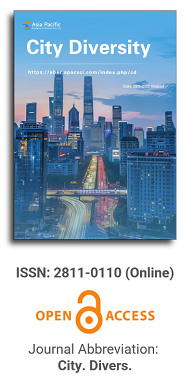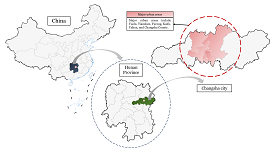
Asia Pacific Academy of Science Pte. Ltd. (APACSCI) specializes in international journal publishing. APACSCI adopts the open access publishing model and provides an important communication bridge for academic groups whose interest fields include engineering, technology, medicine, computer, mathematics, agriculture and forestry, and environment.

As China's pillar industry, the property market has suffered a considerable impact in recent years, with a decline in turnover and many developers at risk of bankruptcy. As one of the most concerned factors for stakeholders, housing prices need to be predicted more objectively and accurately to minimize decision-making errors by developers and consumers. Many prediction models in recent years have been unfriendly to consumers due to technical difficulties, high data demand, and varying factors affecting house prices in different regions. A uniform model across the country cannot capture local differences accurately, so this study compares and analyses the fitting effects of multiple machine learning models using February 2024 new building data in Changsha as an example, aiming to provide consumers with a simple and practical reference for prediction methods. The modeling exploration applies several regression techniques based on machine learning algorithms, such as Stepwise regression, Robust regression, Lasso regression, Ridge regression, Ordinary Least Squares (OLS) regression, Extreme Gradient Boosted regression (XGBoost), and Random Forest (RF) regression. These algorithms are used to construct forecasting models, and the best-performing model is selected by conducting a comparative analysis of the forecasting errors obtained between these models. The research found that machine learning is a practical approach to property price prediction, with least squares regression and Lasso regression providing relatively more convincing results.
Composition and morphological elements of habitat quadrat in urban green space: A case study of Xi’an
Vol 3, Issue 1, 2022
Download PDF
Abstract
The habitat quality and connectivity structure of urban small and medium-sized green space play an important role in promoting urban biodiversity. Under the influence of community life circle services, the urban green space construction in China has formed a typical and repetitive green space pattern. Exploring the minimum quadrat of green space composition and its habitat elements and morphological structure is an important way to improve the urban ecological quality and green space planning and design. This research, based on the basic achievements of urban site habitat construction and ground cover plant community design in northwest China, takes the green space in the old and new urban areas of Xi’an City as the objects. It puts forward the basic scale quadrat of “2 km × 2 km” urban block green space habitat network by using the research paths of review, geographic information interpretation-field surveys and cluster analysis. It has found four typical patterns, which are single-core radiation, multi-core dispersion, corridor crossing and scattered distribution. It also analyzes the coupling relationship between the form, elements and spatial pattern of the quadrat, and explores the ways to improve the construction of green spatial habitat network in the quadrat system.
Keywords
References
- Che S. Landscape structure analysis and ecological planning of urban green space. Nanjing: Southeast University Press; 2003.
- Goddard M A, dougill A J, benton T G. Scaling up from Gardens: Biodiversity Conservation in Urban Environments. Trends in Ecology and Evolution 2010; 25(2): 90–98.
- Chen C, Rong B, Deng H. Comprehensive evaluation system of urban green space in EU countries. Chinese garden 2009; 25(3): 66–69.
- Wang B, An S, Wang C, et al Analysis and Reflection on American green space thought. Journal of architecture 2005; (8): 50–52.
- Qi Fang On the composition of green space in urban residential environment. Chinese garden 1985; 1(4): 8–10.
- Xie R. On the development of urban green space. Chinese garden; 1986.
- Li M. From garden city to land garden forest: development of green space planning idea for human settlement environment. Journal of architecture 1995; (6): 10–14.
- Xiao D, Li X, Gao J, et al Landscape ecology. Version 2 Beijing: Science Press; 2010.
- Wu Jianguo Landscape ecology: pattern, process, scale and grade. Beijing: Higher Education Press; 2007.
- Wang C, Zhou J. Scale difference of ecological function performance of urban green space. Journal of Northeast Forestry University 2002; (3): 107–110.
- BARBOSA O, tratalos J A, armsworth P R, et al. Who Benefits from Access to Green Space? A Case Study from Sheffield, uk. Landscape and Urban Planning 2007; 83(2–3): 187–195.
- Chai Y, Yue M. Research progress of plant community construction mechanism. Journal of ecology 2016; 36(15): 4557–4572.
- Liu H, Li L, Xu D. The ways to build urban green space habitat in Northwest China under the influence of natural environmental conditions. Journal of Xi’an University of architecture and Technology (NATURAL SCIENCE EDITION) 2016; 48(4): 556–561.
- Song Y. Vegetation ecology. Shanghai: East China Normal University Press; 2017.
- Liu H, Li C, Wang J. Habitat and plant community landscape construction under the guidance of low impact development. Chinese garden 2019; 35(10): 1318–1321.
- Jiang H, Duan C, Yang S, et al. Plant ecology. Version 2 Beijing: Higher Education Press; 2010.
- Liu M, ZhangM. Landscape ecology: Principles and methods. Version 2 Beijing: Chemical Industry Press; 20049.
Supporting Agencies
Copyright (c) 2022 Hui Liu, Shuo Cao, Yu Chen

This work is licensed under a Creative Commons Attribution 4.0 International License.

This site is licensed under a Creative Commons Attribution 4.0 International License (CC BY 4.0).

Prof. Mehmet Cetin
Kastamonu University,
Turkey
Polish Scientific Bibliography

